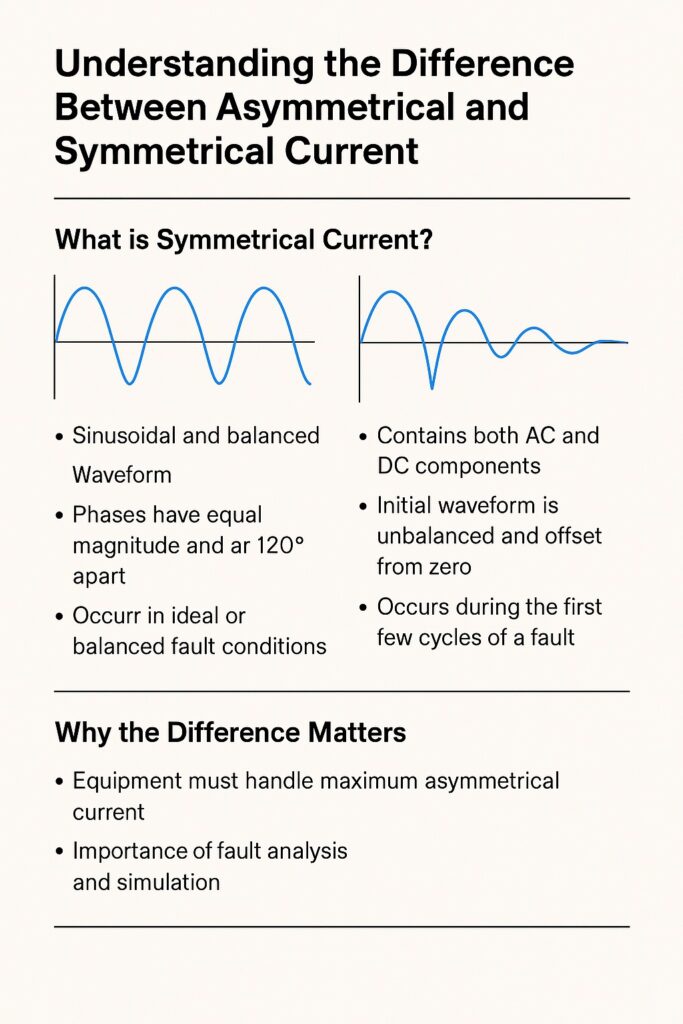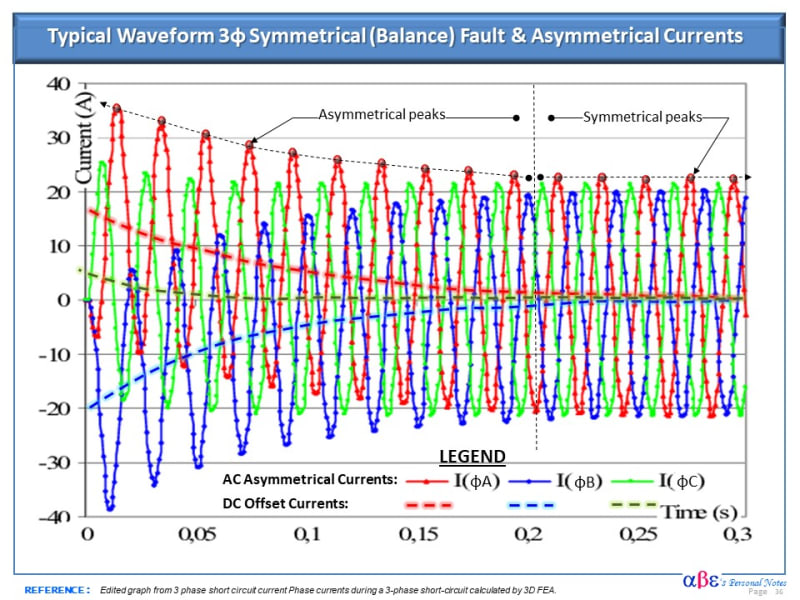In the world of electrical engineering and power systems, understanding current characteristics is crucial to ensure system reliability, safety, and efficiency. Two important terms often encountered are asymmetrical current and symmetrical current. Though they may sound similar, they describe distinctly different conditions in an electrical circuit, especially during fault scenarios. Let’s explore what these terms mean and how they differ.
What is Symmetrical Current?
Symmetrical current refers to an alternating current (AC) waveform that is balanced and consistent in its positive and negative halves. In a three-phase system, this means the current in each phase is equal in magnitude and evenly spaced in phase angle (120 degrees apart). This is the ideal condition of a power system under normal operation.
In fault analysis, a symmetrical fault (such as a three-phase short circuit) generates symmetrical currents that rise instantly to their steady-state peak values and follow a uniform sinusoidal pattern. These faults are rare but easier to analyze because the system remains balanced.
Key Characteristics of Symmetrical Current:
- Waveform is sinusoidal and balanced.
- Phases have equal magnitude and are 120° apart.
- Occurs in ideal or balanced fault conditions.
What is Asymmetrical Current?
Asymmetrical current occurs when the AC waveform becomes distorted, particularly during the initial moments after a fault (such as a line-to-ground fault or an unbalanced short circuit). This distortion includes a DC offset component superimposed on the AC waveform. As a result, the waveform does not start at the zero crossing point, and the peaks are higher than in symmetrical current.
This condition is transient and typically happens when a circuit breaker closes or a fault suddenly occurs. The asymmetry decays over time as the DC component diminishes, and the waveform eventually becomes symmetrical.
Key Characteristics of Asymmetrical Current:
- Contains both AC and DC components.
- Initial waveform is unbalanced and offset from zero.
- Occurs during the first few cycles of a fault.
- Leads to higher peak currents, which are critical for equipment design and protection systems.

Why the Difference Matters
Understanding the difference between symmetrical and asymmetrical currents is vital for designing protective devices like circuit breakers and relays. Equipment must be rated to handle the maximum asymmetrical current during the first few cycles of a fault to prevent failure or damage.
Moreover, accurate fault analysis and simulation depend on recognizing whether a fault generates symmetrical or asymmetrical currents. Asymmetrical currents can cause increased stress on equipment and affect coordination in protection systems.
Conclusion
In summary, symmetrical current represents a balanced and stable condition in a power system, while asymmetrical current reflects an unbalanced and transient state typically following a disturbance. Recognizing and accounting for these differences helps engineers design safer, more reliable electrical systems.


